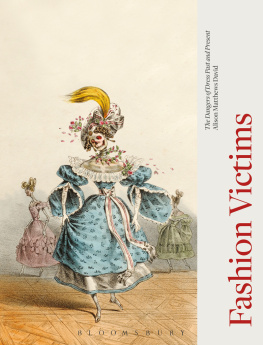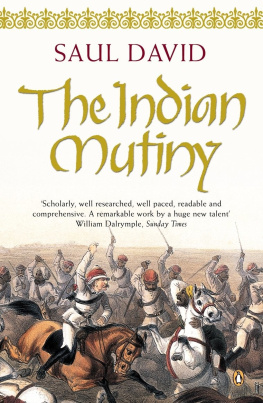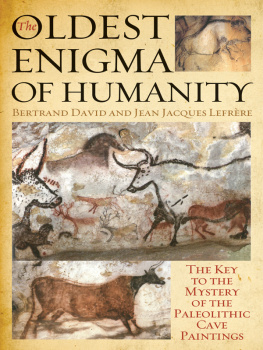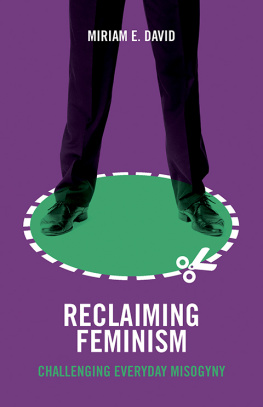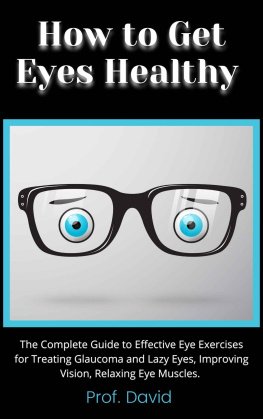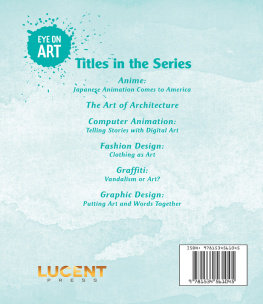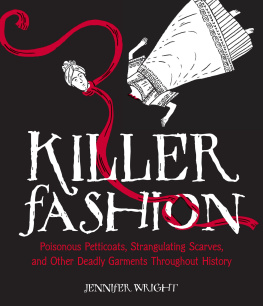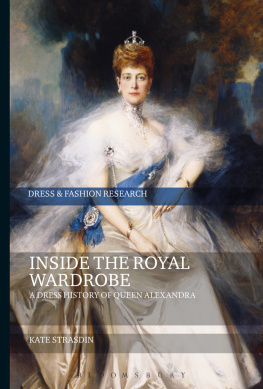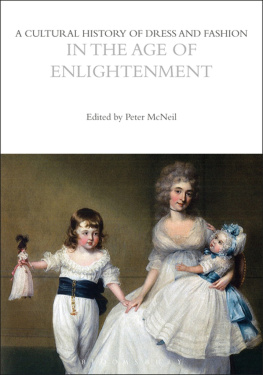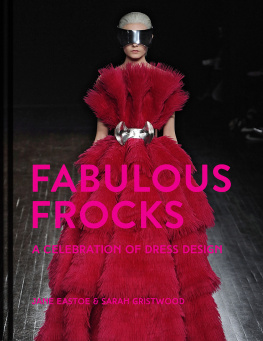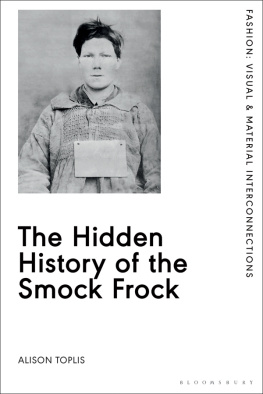
Bloomsbury Visual Arts
An imprint of Bloomsbury Publishing Plc
Imprint previously known as A&C Black Visual Arts
| 50 Bedford Square | 1385 Broadway |
| London | New York |
| WC1B 3DP | NY 10018 |
| UK | USA |
www.bloomsbury.com
Bloomsbury is a trademark of Bloomsbury Publishing Plc
This electronic edition published in 2015 by Bloomsbury Publishing Plc
Alison Matthews David, 2015
Alison Matthews David has asserted her right under the Copyright, Designs and Patents Act, 1988, to be identified as Author of this work.
All rights reserved
You may not copy, distribute, transmit, reproduce or otherwise make available this publication (or any part of it) in any form, or by any means (including without limitation electronic, digital, optical, mechanical, photocopying, printing, recording or otherwise), without the prior written permission of the publisher. Any person who does any unauthorised act in relation to this publication may be liable to criminal prosecution and civil claims for damages.
No responsibility for loss caused to any individual or organization acting on or refraining from action as a result of the material in this publication can be accepted by Bloomsbury or the author.
British Library Cataloguing-in-Publication Data
A catalogue record for this book is available from the British Library.
| ISBN: | HB: | 978-1-8452-0449-5 |
| ePDF: | 978-1-4725-7773-3 |
| ePub: | 978-1-4725-7774-0 |
Library of Congress Cataloging-in-Publication Data
Matthews David, Alison.
Fashion victims: the dangers of dress past and present / by Alison Matthews David.
pages cm
Includes bibliographical references and index.
ISBN 978-1-84520-449-5 (hardcover)
1. Clothing and dressHealth aspects. 2. Product safety. 3.
Hazardous substances. I. Title.
RA779.M38 2015
646'.3dc23
2014049825
Print edition designed by Luke Herriott, Studioink.co.uk
To find out more about our authors and books visit www.bloomsbury.com. Here you will find extracts, author interviews, details of forthcoming events and the option to sign up for our newsletters.
Dedication:
I lovingly dedicate this book to my parents, Arnold and Julia Matthews. You taught me both creativity and discipline. I also dedicate it to my husband Jean-Marc David, for his stoic patience and gentle encouragement, and to our children Sasha and Raphael David, for whom the victims of fashion were always real, important people who deserved our attention and sympathy.
Contents
List of Illustrations
Introduction
Chapter 1
Chapter 2
Chapter 3
Chapter 4
Chapter 5
).
Chapter 6
Chapter 7
2Range of celluloid objects, many in imitation or French Ivory, or Ivorine, for dress, grooming, and adornment, ca.1920s1930s. Museum of Science, London.
.
Conclusion
Acknowledgements
The decade that has seen the research and writing of this book has been a transformative one for me both personally and professionally. I am deeply thankful to my family members, colleagues, and the new friends I have met through this work. It has been an honour to collaborate with Elizabeth Semmelhack, Senior Curator at the Bata Shoe Museum in Toronto. Our constant exchange of ideas blossomed into Fashion Victims: The Pleasures and Perils of Dress in the 19th Century, a co-curated exhibition at the Bata Shoe Museum. Dr. Alison Symes unstinting generosity, razor-sharp editorial skills and unwavering support have immeasurably improved the manuscript and the experience of writing it, and enabled me to stay the course. This book would not have been the same without Hilary Davidsons sensitive critique, poetic understanding, and emotional sustenance. Dr. Eric Da Silva and Professor Ana Pejovi-Mili of the Ryerson Physics Department have generously contributed their scientific expertise, opening up an exciting and entirely new window onto the historical problems I was investigating.
Museum and archive colleagues who have contributed to Fashion Victims include Dr. Alexandra Palmer; Karla Livingston and Arthur Smith of the Royal Ontario Museum; Tim Long and Beatrice Behlen of the Museum of London; Miles Lambert at the Gallery of Costume, Manchester; Marie-Laure Gutton and Alexandra Bosc at the Palais Gallira in Paris; Christelle Commat and liane Bolomier at the Muse du Chapeau et de la Chapellerie; Trza LeFellic at the Muse du Peigne et de la Plasturgie; Ross McFarlane at the Wellcome Collection; and Lesley Miller at the V & A. I would of course like to thank Mrs. Sonja Bata, Founder and Chairman of the Board of the Bata Shoe Museum, along with Emanuele Lepri, Ada Hopkins, Suzanne Petersen McLean, Nishi Bassi, and the rest of the wonderful staff at the Bata Shoe Museum.
My research assistants deserve a special mention, especially Jenifer Forrest and Ryan Ledoux, who brought their curiosity, skills, and valuable insights as makers of fashion to the project, along with Wendy Sepponen, Victoria Di Poce, Alanna McKnight, Myriam Couturier, and all of the students whom it has been a privilege to work with. Thank you to Dr. Janna Eggebeen for her indefatigable assistance with images. Other academic colleagues and friends who have made important contributions include Dr. Bob Davidson, Dr. Vicky Holmes, Dr. Julia Abramson, Dr. Stphanie Sotteau-Soualle, Dylan Reid, Dr. Allison Moorehead, Alexandra Kim, Alice Dolan, Dr. Anita Quye, Dr. Philip Sykas, Dr. Marlis Schweitzer, Dr. Elizabeth Hayman, and Professor Caroline Evans (for her moral and practical support from the very start). Private collectors Glynnis Murphy, Norma Lammont, and Caroline Brass of Brass Rare Books assisted with objects and images. Arnold Matthews deserves special mention here for his tireless and ingenious help with images.
It takes a village to conduct research; amazing village members who made this work possible are Colin and Anne-Marie Matthews, Lise Christoffersen, the David family in France, Caitlin ODonovan, Dr. Jen Yeung, Ana Serrano, Priam Givord, Tal Henderson, Stephanie Herold, Dr. Bruce Perkins, Dr. Elizabeth Stephenson, Dr. Dipti Bhagat, Alida Droual, Dr. Kristin Heins, Dr. Jen Wise, Amanda Cooke, Savannah Bankson, Dr. Mirek Lojkasek, Laurie Gerber, Alyssa Rocco, and last but not least, Leo the cat (for his laid-back support and furry company on my desk, and whose untimely end so sadly coincided with the end of writing this book).
At Ryerson University I thank my colleagues in the School of Fashion, along with Dr. Charles Davis, Dr. Kim Wahl, Joseph Medaglia, Dr. Ben Barry, Dr. Irene Gammel, Dr. Kathryn Church, Dr. Michael Finn, Ingrid Mida, Caroline OBrien, Gowry Sivapathasundaram, Shirley Lewchuk, and Dr. Jorge Loyo Rosales.
An archival project of this scope could not have been conducted without financial assistance from a variety of sources. I would like to acknowledge grant funding from the Social Sciences and Humanities Research Council of Canada (SSHRC), the Centre for Management Labour Relations (CLMR) at Ryerson University, the Faculty of Communication and Design at Ryerson University, the Design History Society 25th Anniversary Award, and an Annual Grant from the University of Southampton.

